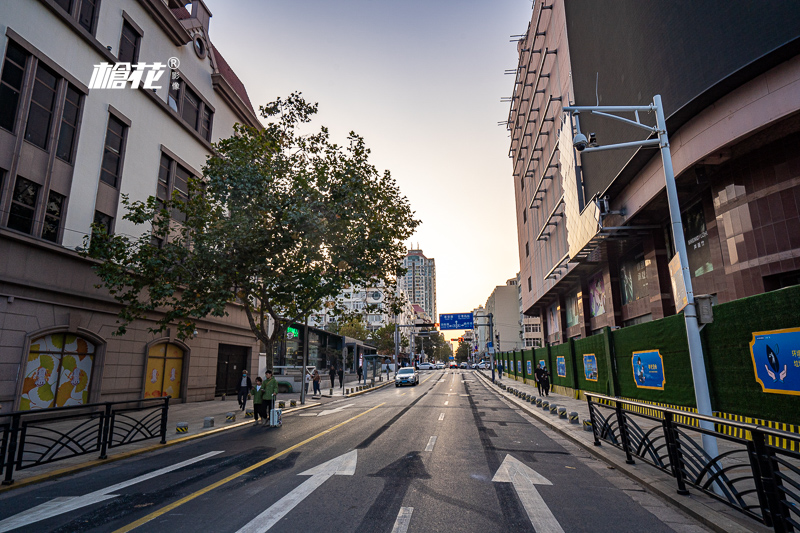本文目录
一、英文介绍的日本旅游景点 日本著名景点英文介绍
解答:富士山英文介绍(带中文翻译):
富士山是日本第一高峰,是日本民族的象征,被日本人民誉为“圣岳”。
Mount Fuji is Japan's tallest peak is a symbol of the Japanese nation, the Japanese people as the"sacred mountain."
富士山位于本州中南部,东距东京约80千米,面积90.76平方千米,海拔3776米,山峰高耸入云,山巅白雪皑皑。
Mount Fuji is located in south central Honshu, about 80 km west of Tokyo, with an area of 90.76 square kilometers. 3,776 meters above sea level, towering peaks, snow snow mountains.
山体呈圆锥状,似一把悬空倒挂的扇子,日本诗人曾用“玉扇倒悬东海天”、“富士白雪映朝阳”等诗句赞美它。
Hill and roughly conical shape, the fan like a vacant savings, the Japanese poet has used the"overhang East Yushan days.""Fuji snow reflects the sun," a poem praising it.
在富士山周围100千米以内,人们可看到富士山美丽的锥形轮廓。
Around 100 km in less than Fuji, people can see Mt beautiful conical outline.
自海拔2300米至山顶一带,均为火山熔岩、火山砂所覆盖。
Since the altitude of 2,300 meters to the Peak area, are volcanic lava, volcanic sand covered.
因此在这一地区,既无丛林又无泉水,登山道也不明显,在沙砾中仅有弯弯曲曲的小道。
Therefore, in this area, neither bush nor springs Mountaineering Road is not obvious that only a winding gravel trail.
在海拔2000米以下至山脚一带,有广阔的湖泊、瀑布、丛林,风景极为秀丽。
At an altitude of 2,000 meters to the foot area, a large lake, waterfalls, jungle, very beautiful scenery.
自公元781年有文字记载以来,富士山共喷发过18次,最后一次是1707年,此后变成休眠火山。
Have been documented since the year 1781, Fuji has erupted over 18 times, the last time was in 1707. Since then become dormant volcanoes.
由于火山口的喷发,山麓处形成无数山洞,千姿百态,十分迷人。
Due to the mouth of the volcano's eruption, the mountain formed and numerous caves, wonderful, very charming.
有的山洞现仍有喷气现象,有的则冷若冰霜。
Some of the caves are still jet, the other Cold-Hearted.
最美的富岳风穴内的洞壁上结满钟乳石似的冰柱,终年不化,通称“万年雪”,被视为罕见的奇观,山顶上有大小两个火山口。
Wind Cave Tomioka beautiful full unity on the wall like icicle stalactites to be found, all year round, is called the"perennial snow." be regarded as a rare spectacle, the size of a volcanic peak.
大火山口,直径约800米、深200米。
Fire Yamaguchi, a diameter of about 800 meters, 200 meters deep.
天气晴朗时,从山顶可看到日出、云海、影富士等大自然风光。
The weather was fine, we can see the sunrise from the top, clouds, Fujitsu and other natural scenery impact.日本景点门票预约
坐落在顶峰上的圣庙-久须志神社、浅间神社也是游客常到之地。
Located on the top of the Temple-long sushi shrine, the shrine is Asama regular visitors to these areas.
富士山地区,春节樱花盛开,夏季山风习习,秋季红叶满山,冬季白雪皑皑。
Mount Fuji, cherry blooming in the Spring Festival, the summer mountain breeze blowing, Hongye filled autumn, winter snow snow.
山周围各种植物多达2000余种,为一天然植物园。
Up to more than 2,000 different species of plants around the hill, a natural botanical garden.
每年7、8月间,日本人竞相到此处登山。
JULY AND AUGUST year, Japanese climbers here to compete.
富士山北麓有富士五湖,从东而西为山中湖、河口湖、西湖、精进湖和木栖湖,以山中湖最大,面积6.75平方千米,湖东南的忍野村,有通道、镜池等八个池塘,总称“忍野八海”,与山中湖相通。
Mt Fuji a northern foothills lakes, the mountains from east to west to Lake Kawaguchi, the West Lake, Lake sophistication and wood-inhabiting Lake the largest lake in the mountains, with an area of 6.75 square kilometers, southeast of Lake patient Nomura, access mirror pools eight ponds. Said"in Japan eight sea," Yamanaka-ko and the same.
西湖岸边有红叶台、青木原树海、鸣泽冰穴、足和天山等风景区。
West Lake shore Hongye Taiwan Strait Aoki original tree, Nakisawa ice caves adequate and Tianshan and other scenic areas.
河口湖在五湖中交通最为方便,湖中有岛,是五湖中唯一有岛之湖,湖中反映的富士山倒影,被成为是富士山奇景之一。
Kawaguchi most convenient transport in lakes, the lake is the island, the island is only five lake lake, the lake reflects the reflection of Mt. was considered as Mt wonders of the world.
Fuji stands tall in the central and southern Honshu(Fujisan) is the highest mountain in Japan, with an elevation of 3,776 meters peaks in the clouds, the mountains or snow snow.
Mt by the Japanese people as"sacred mountain" is the symbol of the Japanese nation. It is about 80 kilometers west of Tokyo, Shizuoka across, Yamanashi counties, with an area of 90.76 square kilometers. And roughly conical shape the entire mountain with their source, the fan is like a vacant savings, the Japanese poet has used the"overhang East Yushan days","Fuji snow reflects the sun," a poem praising it. Mt surrounded Jianfeng, white mountains and long sushi Yue, Dainichigatake, Izu-yueh, achievements Yue, Mitake Komagatake and other"Fuji 8 summit."
Mount Fuji is a dormant volcano. Rumor is formed by earthquakes in 2500 286 years. Since the year 1781, there are written records, a total of 18 meetings eruption, the last time in 1707, and later became dormant volcanoes. Due to the mouth of the volcano's eruption, in the foothills of Mount Fuji to create the numerous mountain caves there are still some jet phenomenon. Wind Cave Tomioka beautiful full unity on the wall like icicle stalactites to be found, all year round, as a rare spectacle. Peak size of a volcanic fire Pass, about 800 meters in diameter and 200 meters deep. The weather was fine, in the Peak watching the sunrise and watch clouds Japanese tourists to the rest of the world is indispensable to visit projects.
Mt Fuji is the northern foothills and lakes. From east to west of the mountain lakes, sights, the West Lake, it is necessary to lakes and the amphibious Lake. Yamanaka-ko largest area of 6.75 square kilometers. Lake has many sports facilities, tennis and water-skiing, fishing, camping and other human-powered boats. Nomura patient southeast of the lake, Chung Chi, mirror pool eight ponds, collectively known as"forbearance eight wild sea," Yamanaka-ko and the same. Kawaguchi is the first development of the five lakes, the traffic is here to facilitate tourism, the center has become lakes. Pelican island in the middle of the lake, the lake is only five islands. An island with a special blessing pregnant production shrine. There are over 1,260 meters across the lake in the Lake Bridge. Kawaguchi, as reflected by the reflection of Mount Fuji, known as the Mt wonders of the world.
West Lake, also known as the west, is the most quiet of a lake, the five lakes. Reportedly, Xihu Lake was connected with the launch, which is divided into two after the eruption of Mt lake, but both are still linked to the lakebed. Taiwan shore Hongye, Aoki original tree sea ice Nakisawa points and feet Wadayama and other scenic areas. Fujitsu sophistication Lake is the smallest among the five lakes lake, but its most unique style, the banks have many tall cliffs and the terrain complicated. Resting most of the water, the depths of 126 meters. Lake ice all year round, is dark blue, the look is so unpredictable and ever-mysterious.
Mount Fuji is a substantial body of water in the highlands of the south, green grass and pastures for cattle and sheep flocks of tourists. Hill south of the West famous waterfall between the white and sounded only waterfalls. The 26-meter gap between white waterfall, a dozen of the small streams into rock faces, like countless Bailian defense heavens, forming a 130-meter wide of the rain, which is quite spectacular. Sounded just like a waterfall shock wave from height columns, as thunderous sound, the vibrations of the initiative. Mt say it is a natural botanical garden, as many as 2,000 species of plants of the mountains.
Susono in Shizuoka Prefecture city of Fuji foothills, either included Fuji safari park, with an area of 740,000 square meters, with 40 1,000 multi-feed wild animals, the Lions reached only 30 multiple. Visitors can drive a car, watch the restocking of animals in the park.
In addition, the area also have illusions travel Fuji Museum, the Museum of insects, and natural sciences department, and the fantasy of the museum, Fuji Museum, the Science Museum large, gardens and bird park, a pet monkeys parks and sports and entertainment venues and so on.
Temple is located at the top of the long sushi shrine-- and Asama shrine Fuji Hakone Izu National Park, the main scenic spots, as well as regular visitors to the land. Peak to the shrine every summer thousands of tourists both domestic and foreign tourists.
The first amusement park in Asia, Tokyo Disneyland is the world's largest existing five blocks of a Disney park. Five consecutive years from 1994 to 1999 the number of visitors more than Disneyland in the United States.
There are two main reasons: its successful experience First,"everything is dynamic." Tokyo Disneyland theme park: Victoria Dynasty five times the world market style streetscape, a sense of adventure and legendary adventure theme park and the development of the West's Western Paradise, dreams and fairy tale dream land, the future, science parks and the future of the universe. A total of five major theme park 35 brilliant performances, is the common feature of all the activities are, the game. Strange, new and thrilling, intense scenes and figures tourists will forget reality into another world. So that it will become possible, the Japanese developed their own"electronic sound devices action." In such a device driven, in 2000 the total number of park over the figures and animals each room, reaching into adults to the extent that they are as people.
Second,"do not always build the Disney theme park." From opening to now, Tokyo Disneyland constantly added to the introduction of a new playground equipment and services and the way to attract tourists and visitors come off the business strategy afresh. The Paradise original investment of 1,500 billion yen(about one billion U.S. dollars). 18 years, the theme park to build a super audio equipment and 35 playgrounds they have invested 120 billion yen. It is understood that within the next five years to build new projects, the Paradise prepared to invest 65 billion yen. This will enable visitors are always new fun and a new experience, the Disney theme park is maintained so great charm.
Nagoya is a symbol of Nagoya Castle, Nagoya, the first
二、日本著名景点英文名称
富士山,是一座跨越在日本静冈县(富士宫市、裾野市、富士市、御殿场市、骏东郡小山町)与山梨县(富士吉田市、南都留郡鸣沢村)之间的活火山。
东京塔是东京地标性建筑物,位于东京都港区芝公园,高332.6米。东京塔除主要用于发送电视、广播等各种无线电波外、还在大地震发生时发送JR列车停止信号,兼有航标、风向风速测量、温度测量等功能。
阿苏山是日本著名活火山。位于九州岛熊本县东北部,是熊本的象征,以具有大型破火山口的复式火山闻名于世。略呈椭圆形,南北长24公里,东西宽18公里,周围约120公里,面积250平方公里。
4,唐招提寺(Tōshōdai Temple)
唐招提寺,日本佛教律宗建筑群。简称为招提寺。在日本奈良市西京五条。由中国唐朝鉴真主持,于公元759年建成,与东大寺的戒坛院并为传布和研究律学的两大道场。
鹿苑寺(ろくおんじ),是位于日本京都市北区的临济宗相国寺派的寺院。其中,内外都贴满了金箔的三层楼阁建筑(舍利殿)也被称为金阁,包括舍利殿在内的寺院整体也被称为金阁寺(きんかくじ)。该寺为相国寺的山外塔头寺院。
参考资料来源:百度百科-唐招提寺
三、东京文化旅游景点介绍英文版 东京著名景点英文介绍
Arashiyama(岚山?) is a district on the western outskirts of Kyoto, Japan. It also refers to the mountain across the _i River, which forms a backdrop to the district.
Notable tourist sites in Arashiyama include
The Iwatayama Monkey Park on the slopes of Mount Arashiyama. Over 170 monkeys live at the park. While the monkeys are wild, they have become accustomed to humans. The park is located on a small mountain not far from the Saga-Arashiyama rail station. Visitors can approach and photograph the monkeys. At the summit is a fenced enclosure, from within which visitors can feed the monkeys.
The romantic"Moon Crossing Bridge"(渡月桥,Togetsukyō), notable for its views of cherry blossoms and autumn colors on the slopes of Mt Arashiyama.
The tombstone of the Heike courtesan Kogo of Sagano.日本塔景点门票
Tenryū-ji, the main temple of the Rinzai school, one of the two main sects of Zen Buddhism in Japan.
The hamlet of Kiyotaki, a small scenic village at the base of Mt Atago, the home to a notable Shinto shrine.
Matsuo Shrine, half a mile south of the area, which is home to a blessed spring. It is also one of the oldest shrines in the Kyoto area, founded in 700. The alleged restorative properties of the spring bring many local sake and miso companies to the shrine for prayers that their product will be blessed.
Kameyama koen has a stone commemorating Zhou Enlai's visited to Arashiyama. He was moved by the cherry blossoms and mountain greenery. The four poems Zhou Enlai wrote about his visit are engraved on a stone monument:"Arashiyama in the Rain."
Nijō Castle(二条城,Nijō-jō?) is a flatland castle located in Kyoto, Japan. The castle consists of two concentric rings of fortifications, the Ninomaru Palace, the ruins of the Honmaru Palace, various support buildings and several gardens. The surface area of the castle is 275,000 square meters, of which 8000 square meters is occupied by buildings.
Present plan of Nijō Castle(click for detailed view)In 1601, Tokugawa Ieyasu, the founder of the Tokugawa Shogunate, ordered all the feudal lords in Western Japan to contribute to the construction of Nijō Castle, which was completed during the reign of Tokugawa Iemitsu in 1626. Parts of Fushimi Castle, such as the main tower and the Kara Gate, were moved here in 1625-26.[1] It was built as the Kyoto residence of the Tokugawa Shoguns. The Tokugawa Shogunate used Edo as the capital city, but Kyoto continued to be the home of the Imperial Court. Kyoto Imperial Palace is located north-east of Nijo Castle.
The central keep, or donjon, was struck by lightning and burned to the ground in 1791.
In 1788, the Inner Palace was destroyed by a city-wide fire. The site remained empty until it was replaced by a prince's residence transferred from the Kyoto Imperial Palace in 1893.
In 1867, the Ninomaru Palace was the stage for the declaration by Tokugawa Yoshinobu, returning the authority to the Imperial Court. Next year the Imperial Cabinet was installed in the castle. The palace became imperial property and was declared a detached palace. During this time, the Tokugawa hollyhock crest was removed wherever possible and replaced with the imperial chrysanthemum.
In 1939, the palace was donated to the city of Kyoto and opened to the public the following year.
Ryōan-ji(Shinjitai: _安寺, Kyūjitai:龙安寺?, The Temple of the Peaceful Dragon) is a Zen temple located in northwest Kyoto, Japan. Belonging to the Myoshin-ji school of the Rinzai branch of Zen Buddhism, the temple is one of the Historic Monuments of Ancient Kyoto, a UNESCO World Heritage Site.
The site of the temple was originally a Fujiwara family estate. It eventually came into the hands of the Hosokawa clan branch of the Fujiwaras. Hosokawa Katsumoto inherited the residence, and lived here before the _nin War. Katsumoto willed the war-ravaged property to be converted into a Zen sect temple complex after his death. Later Hosokawa emperors are grouped together in what are today known as the"Seven Imperial Tombs" at Ryoan-ji. The burial places of these emperors-- Uda, Kazan, Ichijō, Go-Suzaku, Go-Reizei, Go-Sanjō, and Horikawa-- would have been comparatively humble in the period after their deaths. These tombs reached their present state as a result of the 19th century restoration of imperial sepulchers(misasagi) which were ordered by Emperor Meiji.[1]
Ryōan-ji's tsukubai(蹲踞?), which is a small basin provided at Japanese Buddhist temples for visitors to purify themselves by the ritual washing of hands and rinsing of the mouth.An object of interest near the rear of the monks quarters is the carved stone receptacle into which water for ritual purification continuously flows. This is the Ryōan-ji tsukubai(蹲踞?), which translates literally as"crouch;" and the lower elevation of the basin requires the user to bend a little bit to reach the water, which suggests supplication and reverence.[2] The kanji written on the surface of the stone are without significance when read alone. If each is read in combination with口(kuchi), which the central bowl is meant to represent, then the characters become吾,唯,足,知. This is read as"ware tada taru(wo) shiru" and translates literally as"I only know plenty"(吾= ware= I,唯= tada= only,足= taru= plenty,知= shiru= know). The meaning of the phrase carved into the top of the tsukubai is simply that"what one has is all one needs" and is meant to reinforce the basic anti-materialistic teachings of Buddhism.
The absence of a dipper is intended to imply that the water is for the soul only and that it is necessary to bend the knee in humility in order to receive its blessing.
Kiyomizu-dera(清水寺?), full name Otowa-san Kiyomizu-dera(音羽山清水寺?) is an independent Buddhist temple in eastern Kyoto. The temple is part of the Historic Monuments of Ancient Kyoto(Kyoto, Uji and Otsu Cities) UNESCO World Heritage site.[1] Not one nail is used in the whole temple. The temple should not be confused with Kiyomizu-dera in Yasugi, Shimane, which is part of the 33-temple route of the Chūgoku 33 Kannon Pilgrimage through western Japan.[2]
其实这些都是维基百科找来的,本来想给链接的,百度说我有广告,只贴了部分,其他的可用google维基百科英文版找,包括景点介绍,历史什么的很全的。
日本又哪些景点(中英文互译的)
大涌谷(Owakudani)是箱根最著名的旅游景点。在绿树环抱的箱根中惟独此处山岩裸露,岩缝间喷出的地热蒸气雾气腾腾,令人感到地球的生命运动,尉为壮观。由此可眺望富士山和箱根群山的美丽景色。
东京迪斯尼有两大主题乐园,七座舒适的大饭店,以及其它购物娱乐设施所组成的欢乐世界。是大人找回童真,小孩寻找快乐的地方。
Tower)位于东京市内,建成于1958年,塔高333米,这座日本最高的独立铁塔上部装有东京都7个电视台、21个电视中转台和广播台等的无线电发射天线。在250米高的地方,也设有一个特别展望台。展望台四边都是落地的大玻璃窗,窗向外倾斜。
Mountain)位于本州岛中南部,海拔3776米,是日本最高峰,日本人奉之为“圣山”,是日本民族的象征,距东京约80公里,跨静冈、山梨两县,面积为90.76平方公里。整个山体呈圆锥状,山顶终年积雪日本东映景点门票。
Temple)位于奈良市的唐招提寺是由中国唐代高僧鉴真和尚亲手兴建的,是日本佛教律宗的总寺院,这座具有中国盛唐建筑风格的建筑物被确定为日本国宝。
富士山,是一座跨越在日本静冈县(富士宫市、裾野市、富士市、御殿场市、骏东郡小山町)与山梨县(富士吉田市、南都留郡鸣_村)之间的活火山。
东京塔是东京地标性建筑物,位于东京都港区芝公园,高332.6米。东京塔除主要用于发送电视、广播等各种无线电波外、还在大地震发生时发送JR列车停止信号,兼有航标、风向风速测量、温度测量等功能。
阿苏山是日本著名活火山。位于九州岛熊本县东北部,是熊本的象征,以具有大型破火山口的复式火山闻名于世。略呈椭圆形,南北长24公里,东西宽18公里,周围约120公里,面积250平方公里。
4,唐招提寺(Tōshōdai Temple)
唐招提寺,日本佛教律宗建筑群。简称为招提寺。在日本奈良市西京五条。由中国唐朝鉴真主持,于公元759年建成,与东大寺的戒坛院并为传布和研究律学的两大道场。
鹿苑寺(ろくおんじ),是位于日本京都市北区的临济宗相国寺派的寺院。其中,内外都贴满了金箔的三层楼阁建筑(舍利殿)也被称为金阁,包括舍利殿在内的寺院整体也被称为金阁寺(きんかくじ)。该寺为相国寺的山外塔头寺院。
参考资料来源:百度百科-唐招提寺
Tokyo is the capital of Japan.It is the biggest city in Asia and it is also very beatiful.You can see the beatiful mountain in Tokyo.There is snow on it and it looks very nice.I hope on day I can go there.日本景点门票贵吗












